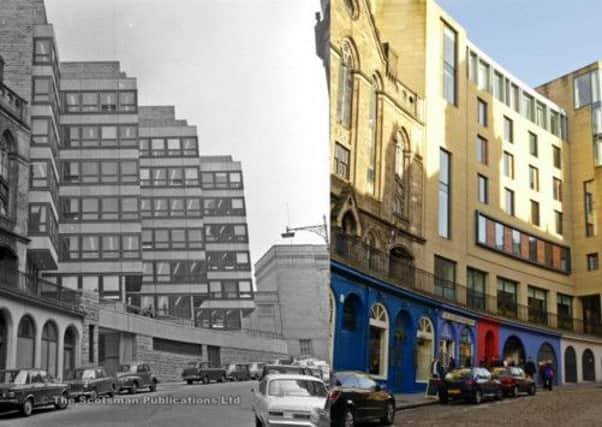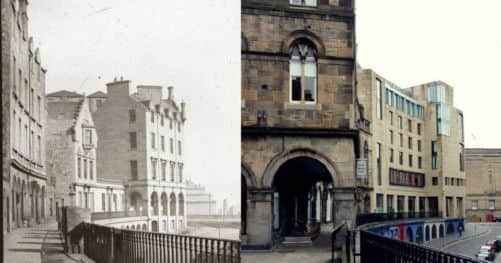Lost Edinburgh: The creation of Victoria Street


Before the creation of Victoria Street and Johnston Terrace in the early 1800s, the steep, awkward incline of the old West Bow was the only feasible passage for those wishing to access the Lawnmarket and Edinburgh Castle from the west.
The old West Bow was a precipitous, narrow Z-shaped street linking the Grassmarket with Castlehill. Its path is somewhat preserved today by the steps which cut through Victoria Street towards the Upper Bow. Prior to the 19th century it was considered to be one of the most important roads in Edinburgh, despite its reputation as one of the most difficult to negotiate if travelling by carriage.
Advertisement
Hide AdAdvertisement
Hide AdMany of the oldest buildings in the city were contained along the old West Bow. An abundance of timber-fronted houses had sprung up over the centuries, many of them resembling upside-down pyramids due to the manner in which the floors increasingly protruded out as they progressed upwards.


As such, the distance between the top floors of some of the houses on either side of the street was so little that it is said neighbours could enjoy ‘the pleasure of tea drinking, without the trouble of leaving their respective abodes’.
The old West Bow was radically transformed between 1829-34 as part of town planner Thomas Hamilton’s 1827 Improvement Act which was set up to provide better approaches into the Old Town from the west and south. The eventual design featured a gentle, curved link from the Grassmarket up to the newly-created George IV Bridge. It was originally named Bow Street, remaining so until 1837 when the arrival to the British throne of Queen Victoria was suitably honoured by the city.
The new street retained many of the older buildings at the foot of the curve, though countless medieval structures were lost forever along the rest of its route. On its northern side, an upper level terrace was constructed akin to a similar example which once existed on Leith Street before the St. James Centre.
A small flight of stairs halfway up the street helped to bridge the old with the new and preserve the ancient link from the Grassmarket to Castlehill. The terrace continued up towards George IV Bridge supported by a series of arches which later provided space for an arcade of shops.
Improvements continued on either side of Victoria Street over the next 40 years; the grand, imposing India Buildings constructed in 1864 are among the most notable. After the 1860s, the street would remain virtually unaltered for the next century. Change arrived in 1967 when the controversial decision was taken to remove the 19th century buildings situated on the north-east end of Victoria Street in order to create space for Lothian Regional Council’s new headquarters.
The new office block would replace the old Midlothian County buildings that stretched across a section of George IV Bridge from Victoria Street to the Lawnmarket. Many of Edinburgh’s citizens were incensed at the decision to construct a modern office block within the heart of Edinburgh’s historic and world famous Old Town.
The Lothian Regional Council HQ was eventually demolished in 2007 to be replaced by the Hotel Missoni. The architects of the latest building to grace the site appear to have made an attempt to honour the past by reintroducing the arches which were an integral feature of the original plan.
Advertisement
Hide AdAdvertisement
Hide AdThe mix of several centuries of attractive architecture, vibrant atmosphere and quirky selection of shops, pubs, cafes and restaurants have secured Victoria Street’s status as one of the jewels in Edinburgh’s crown.